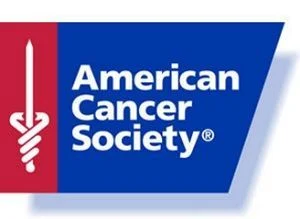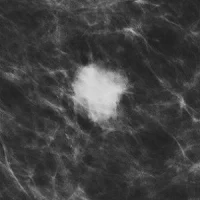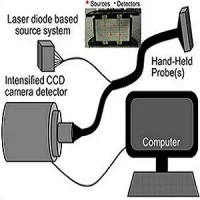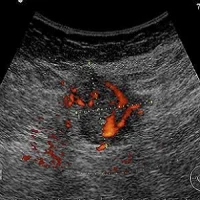The American Cancer Society’s updated breast cancer screening guideline recommends that women with an average risk of breast cancer should undergo regular, annual screening mammography beginning at age 45 years, with women having an opportunity to choose to begin annual screening between the ages of 40 and 44 years, according to an article published in JAMA.
The ACS guideline includes other new recommendations for breast cancer screening for women at average risk:
Since the last ACS breast cancer screening update for average-risk women was published in 2003, new evidence has accumulated from long-term follow-up of randomised controlled trials and observational studies of organised, population-based screening programmes. Diana L. Miglioretti, PhD, of the University of California Davis School of Medicine, and colleagues performed an analysis of Breast Cancer Surveillance Consortium mammography registry data to address questions related to screening intervals. Formulation of recommendations was based on the quality of the evidence and judgment (incorporating values and preferences) about the balance of benefits and harms.
The guideline is intended to provide guidance to the public and clinicians, the authors note, and it is especially designed for use in the context of a clinical encounter. "Women should be encouraged to be aware of and to discuss their family history and medical history with a clinician, who should periodically ascertain whether a woman's risk factor profile has changed. If the woman has an average risk of developing breast cancer, the ACS encourages a discussion of screening around the age of 40 years," the authors say.
In an accompanying editorial, Nancy L. Keating, MD, MPH, of Harvard Medical School, Boston, and Lydia E. Pace, MD, MPH, of Brigham and Women's Hospital, Boston, write: “Will the new ACS guideline make it easier for clinicians and women to make decisions about screening mammography? In some ways, the messages from ACS and the U.S. Preventive Services Task Force (USPSTF), two major guidelines, are now more consistent. Both guidelines agree that for average-risk women younger than 45 years, the harms of mammography screening likely outweigh the benefits."
Meanwhile, the American College of Radiology (ACR) and Society of Breast Imaging (SBI) continue to recommend that women get yearly mammograms starting at age 40.
“The ACS has strongly reaffirmed that mammography screening saves lives. The new ACS guidelines show that if a woman wants to reduce, as much as possible, her risk of dying of breast cancer, she will choose yearly mammography starting at age 40. A recent study in the British Medical Journal confirms this, showing that early detection of breast cancer is critical for improving breast cancer survival, regardless of therapy advances. Moving away from annual screening of women ages 40 and older puts women’s lives at risk,” said Debra Monticciolo, MD, FACR, chair of the American College of Radiology Breast Imaging Commission.
SBI President, Elizabeth Morris, MD, FACR, stated: "The ACR and SBI agree with ACS that women 40 and older should have access to mammograms. We also recommend that women, 40 to 45, get screened and would expect that mammography critics would agree that Medicare and private insurers should be required to cover women 40 and older for these exams."
The ACR and SBI commend ACS for using the modern IOM guideline development process — which is more trustworthy than the antiquated USPSTF methods. The ACS performed an extensive evidence review, including randomised control trials and population-based observational studies. This goes beyond the USPSTF limited review of only selected studies that underestimate the lifesaving benefit of mammography screening. Many of those studies were decades old and used what would now be considered outdated equipment.
Source: JAMA; American College of Radiology (ACR)
Image credit: American Cancer Society
The ACS guideline includes other new recommendations for breast cancer screening for women at average risk:
- Women 45 to 54 years of age should be screened annually.
- Women 55 years and older should transition to biennial screening or have the opportunity to continue screening annually.
- Women should continue screening mammography as long as their overall health is good and they have a life expectancy of 10 years or longer.
- Clinical breast examination is not recommended for breast cancer screening among average-risk women at any age.
Since the last ACS breast cancer screening update for average-risk women was published in 2003, new evidence has accumulated from long-term follow-up of randomised controlled trials and observational studies of organised, population-based screening programmes. Diana L. Miglioretti, PhD, of the University of California Davis School of Medicine, and colleagues performed an analysis of Breast Cancer Surveillance Consortium mammography registry data to address questions related to screening intervals. Formulation of recommendations was based on the quality of the evidence and judgment (incorporating values and preferences) about the balance of benefits and harms.
The guideline is intended to provide guidance to the public and clinicians, the authors note, and it is especially designed for use in the context of a clinical encounter. "Women should be encouraged to be aware of and to discuss their family history and medical history with a clinician, who should periodically ascertain whether a woman's risk factor profile has changed. If the woman has an average risk of developing breast cancer, the ACS encourages a discussion of screening around the age of 40 years," the authors say.
In an accompanying editorial, Nancy L. Keating, MD, MPH, of Harvard Medical School, Boston, and Lydia E. Pace, MD, MPH, of Brigham and Women's Hospital, Boston, write: “Will the new ACS guideline make it easier for clinicians and women to make decisions about screening mammography? In some ways, the messages from ACS and the U.S. Preventive Services Task Force (USPSTF), two major guidelines, are now more consistent. Both guidelines agree that for average-risk women younger than 45 years, the harms of mammography screening likely outweigh the benefits."
Meanwhile, the American College of Radiology (ACR) and Society of Breast Imaging (SBI) continue to recommend that women get yearly mammograms starting at age 40.
“The ACS has strongly reaffirmed that mammography screening saves lives. The new ACS guidelines show that if a woman wants to reduce, as much as possible, her risk of dying of breast cancer, she will choose yearly mammography starting at age 40. A recent study in the British Medical Journal confirms this, showing that early detection of breast cancer is critical for improving breast cancer survival, regardless of therapy advances. Moving away from annual screening of women ages 40 and older puts women’s lives at risk,” said Debra Monticciolo, MD, FACR, chair of the American College of Radiology Breast Imaging Commission.
SBI President, Elizabeth Morris, MD, FACR, stated: "The ACR and SBI agree with ACS that women 40 and older should have access to mammograms. We also recommend that women, 40 to 45, get screened and would expect that mammography critics would agree that Medicare and private insurers should be required to cover women 40 and older for these exams."
The ACR and SBI commend ACS for using the modern IOM guideline development process — which is more trustworthy than the antiquated USPSTF methods. The ACS performed an extensive evidence review, including randomised control trials and population-based observational studies. This goes beyond the USPSTF limited review of only selected studies that underestimate the lifesaving benefit of mammography screening. Many of those studies were decades old and used what would now be considered outdated equipment.
Source: JAMA; American College of Radiology (ACR)
Image credit: American Cancer Society
Latest Articles
healthmanagement, American Cancer Society, breast cancer screening, guidelines, mammography, American College of Radiology
The American Cancer Society’s updated breast cancer screening guideline recommends that women with an average risk of breast cancer should undergo regular, annual screening mammography beginning at age 45 years, with women having an opportunity to choose










